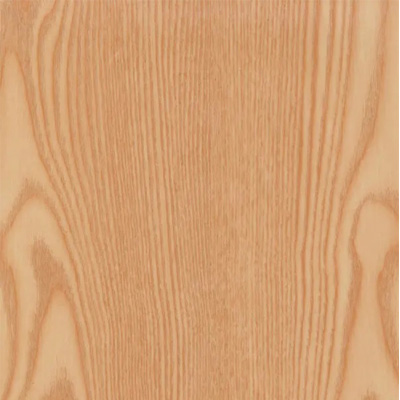- Home
- High-Quality Duplex Board Packaging for Food Reliable Manufacturer & Supplier
Iyul . 06, 2025 05:18 Back to list
High-Quality Duplex Board Packaging for Food Reliable Manufacturer & Supplier
- Introduction to Duplex Board Packaging: Definition and Importance
- Technical Advantages of Duplex Board Food Packaging
- Comparative Analysis of Leading Manufacturers and Suppliers
- Customization Solutions in Duplex Board Food Packaging
- Market Applications and Case Studies
- Environmental Impact and Sustainability Metrics
- Conclusion: Future Trends in Duplex Board Packaging

(duplex board packaging)
Introduction to Duplex Board Packaging: Definition and Importance
Duplex board packaging refers to a type of paperboard that is specifically engineered to provide robust protection and aesthetic appeal for various products, especially in the food industry. By utilizing a two-layer construction method, manufacturers create a board where the top layer offers a smooth, printable surface, ideal for branding and product information, while the back layer is made from recycled fibers, contributing to strength and durability. The global demand for duplex board has surged over the past decade, with the duplex board packaging
market valued at approximately USD 13 billion in 2023 and forecasted to reach USD 18.5 billion by 2030, reflecting a compound annual growth rate (CAGR) of 5.2%. This growth is driven by the increasing need for sustainable, cost-effective, and visually compelling packaging solutions across food and consumer goods segments.
The significance of duplex board food packaging lies in its capability to balance functionality and sustainability. Food brands are now more inclined to collaborate with expert duplex board food packaging manufacturers and suppliers to enhance shelf life, minimize environmental impact, and ensure regulatory compliance for food safety. Moreover, regulations across major markets, such as the EU’s Single-Use Plastics Directive and the US FDA’s regulations on food contact materials, further accelerate the adoption of fiber-based alternatives. As the packaging landscape evolves, the role of specialized products and suppliers has never been more pivotal.
Technical Advantages of Duplex Board Food Packaging
Technological advancements in manufacturing duplex board food packaging products have redefined the standards for packaging quality and safety. One of the principal advantages is their excellent printability, which allows for high-resolution graphics critical for consumer engagement. Additionally, duplex boards possess a high resistance to oils and moisture when adequately treated, making them an ideal choice for packaging bakery items, ready-to-eat meals, and frozen foods.
In terms of barrier properties, modern duplex board food packaging integrates coatings or lamination, achieving performance nearly equivalent to some plastic alternatives but with superior recyclability. Tests show that advanced duplex boards can withstand humidity up to 97% RH for sustained periods without compromising mechanical integrity—critical for products transported through diverse climates. The following table presents a comparison of key technical parameters among typical duplex boards and alternative materials:
| Parameter | Duplex Board | Solid Bleached Sulphate (SBS) | Plastic (PET) | Kraft Board |
|---|---|---|---|---|
| Burst Strength (kPa) | 500-800 | 700-900 | 1200-1800 | 650-950 |
| Moisture Resistance (%) | 85-97 | 80-90 | 99+ | 80-92 |
| Recyclability (%) | 95 | 92 | 23 | 98 |
| Printability | High | Excellent | Moderate | Good |
| Material Cost (USD/ton) | 900-1100 | 1200-1400 | 1900-2200 | 950-1150 |
The data highlights how duplex board strikes a unique balance between cost, recyclability, performance, and printability—making it a preferred standard for major food applications globally.
Comparative Analysis of Leading Manufacturers and Suppliers
Selecting the right duplex board food packaging manufacturer or supplier can dramatically impact the quality, consistency, and brand reputation of the final packaged product. The ecosystem comprises global leaders, regional specialists, and niche players, each offering distinctive technological capabilities, lead times, and customization options.
Below is a comparative analysis of prominent manufacturers and suppliers based on production capacity, certifications, R&D investment, and global reach:
| Vendor | Annual Capacity (Tons) | Certifications | R&D Expenditure (% Revenue) | Major Markets |
|---|---|---|---|---|
| Tetra Pak | 1,200,000 | ISO 22000, FSC, FDA | 4.2 | Global |
| Stora Enso | 850,000 | FSC, PEFC, BRCGS | 3.5 | Europe, Asia |
| Oji Holdings | 650,000 | ISO 9001, FSC | 2.1 | Asia-Pacific |
| ITC Limited | 520,000 | ISO 14001, BRC | 3.0 | South Asia |
| Local SME Suppliers | 10,000-45,000 | Varies | 0.5-1.0 | Domestic |
Multinational firms typically offer greater reliability, advanced packaging options, and internationally recognized certifications, whereas SME suppliers provide flexible and cost-effective services for local markets. For brands aiming for wide-scale distribution, collaborating with an established duplex board supplier ensures not only consistent quality but also seamless regulatory approvals and innovation in product design.
Customization Solutions in Duplex Board Food Packaging
The evolution of the food industry has propelled the demand for personalized packaging that aligns with branding, product-specific barriers, and unique functional requirements. Duplex board packaging offers exceptional versatility for custom solutions, right from the selection of grammage, coatings, and finishes to intricate die-cut and embossing features.
Manufacturers are increasingly leveraging digital printing, anti-counterfeiting inks, and QR-code integration on duplex board food packaging products, enhancing consumer engagement and improving inventory management. For food manufacturers, specific innovations include:
- Moisture-resistant coatings suitable for chilled and frozen products
- Micro-flute structural reinforcement for heavier loads
- Greaseproof laminations for bakery, delicatessen, and fast-food packaging
- Window patching to showcase the product and build customer trust
Market Applications and Case Studies
The applications of duplex board food packaging span a wide range of market segments, including bakery, dairy, frozen foods, ready-to-eat meals, confectionery, and even fresh produce. For each application, performance requirements differ—response to moisture, oil resistance, stackability, shelf-life extension, and compliance with food contact regulations. Notable market examples illustrate the value that duplex board brings to end users:
- Bakery Sector: European bakery chains have migrated from plastics to duplex board trays with PE coatings to reduce single-use plastic consumption by 80%, while retaining freshness for over 5 days.
- Frozen Foods: A leading North American frozen meal producer reported a 14% reduction in packaging costs and a 29% improvement in logistics efficiency after switching to custom-sized duplex board cartons.
- Fresh Produce: Exporters in South Asia utilize duplex board fruit trays with proprietary vent designs that cut spoilage rates by 7% over conventional corrugated alternatives.
- Confectionery: Global chocolate brands leverage high-gloss, gold-foiled duplex board boxes, achieving a 22% sales increase due to elevated perceived value and premium unboxing experience.
These case studies demonstrate not just the adaptability of duplex board food packaging products, but also their tangible impact on costs, environmental objectives, and consumer loyalty.
Environmental Impact and Sustainability Metrics
Environmental stewardship has emerged as a central concern for both manufacturers and consumers. Duplex board, typically comprising up to 80% recycled content, offers a lower carbon footprint compared to plastics and even some virgin-fiber boards. Lifecycle assessments (LCA) affirm that shifting from plastic trays to duplex board for ready meal packaging can reduce greenhouse gas emissions by up to 56% across the usage cycle.
The recyclability of duplex board exceeds 95% in established paper recovery systems. Furthermore, advances in water-based coatings have made it feasible for food-grade duplex board to be composted or even safely incinerated in waste-to-energy plants, turning waste into renewable power. The following statistics illustrate the sustainability impact:
- Global recycling rates for fiber-based packaging have surpassed 85% as of 2022 (FAO).
- Implementation of circular supply chains led one major food distributor to cut landfill-bound packaging materials by 40% in three years.
- FSC and PEFC certified sources for duplex board now account for over 70% of the total market share, up from 50% just five years ago.
Conclusion: Future Trends in Duplex Board Packaging
As the food and consumer goods sectors continue to evolve, the future of duplex board packaging is firmly anchored in innovation, sustainability, and market responsiveness. Manufacturers are expected to accelerate investments into biodegradable coatings, smart label integration, and digital traceability, amplifying both product security and consumer trust. The next generation of duplex board food packaging suppliers will likely focus on holistic solutions that combine intelligent design, regulatory foresight, and eco-conscious materials.
Driving this future is a set of data-driven commitments: lowering carbon footprints, maximizing recyclability, and connecting packaging with the larger circular economy. Brands that keep pace with developments in duplex board packaging products are well-positioned to not only satisfy the growing regulatory stringency but also win favor with environmentally aware consumers and partners. The journey ahead will witness duplex board emerging as a key enabler in packaging’s evolution, merging form, function, and sustainability for a broad spectrum of food and non-food segments.

(duplex board packaging)
FAQS on duplex board packaging
Q: What is duplex board packaging?
A: Duplex board packaging consists of double-layered paperboard with a smooth surface, ideal for printing and customization. It's commonly used for packaging food and retail products. Its strength and versatility make it a popular choice.Q: Why choose a duplex board food packaging manufacturer?
A: A duplex board food packaging manufacturer specializes in producing safe, high-quality boxes and containers for food items. They ensure compliance with food safety standards. Their expertise guarantees suitable and attractive packaging.Q: How can I find a reliable duplex board food packaging supplier?
A: Look for suppliers with a reputable history, certifications, and positive customer reviews. Ensure they offer customizable solutions for your food packaging needs. Good suppliers provide timely delivery and competitive pricing.Q: What products fall under duplex board food packaging?
A: Duplex board food packaging products include cake boxes, takeaway containers, and snack cartons. These products are designed for strength, hygiene, and visual appeal. They help maintain food quality during transport.Q: Is duplex board food packaging eco-friendly?
A: Yes, duplex board packaging is often made from recycled materials and is recyclable itself. It's a sustainable alternative to plastic packaging. Many manufacturers offer eco-friendly options to align with environmental goals.Latest news
-
Premium White Contact Paper on Cabinets – Trusted Exporters & Suppliers
NewsJul.06,2025
-
High-Quality Duplex Board Packaging for Food Reliable Manufacturer & Supplier
NewsJul.06,2025
-
Premium Contact Paper Over Desk – Durable & Stylish Desk Cover Solutions
NewsJul.05,2025
-
High-Quality Duplex Board Food Packaging - Reliable Suppliers & Exporters
NewsJul.05,2025
-
Duplex Paper Rate Per Kg – Best Manufacturer & Supplier Prices Online
NewsJul.04,2025
-
High-Quality Duplex Kraft Paper Reliable Suppliers & Exporters Top Manufacturers
NewsJul.04,2025

